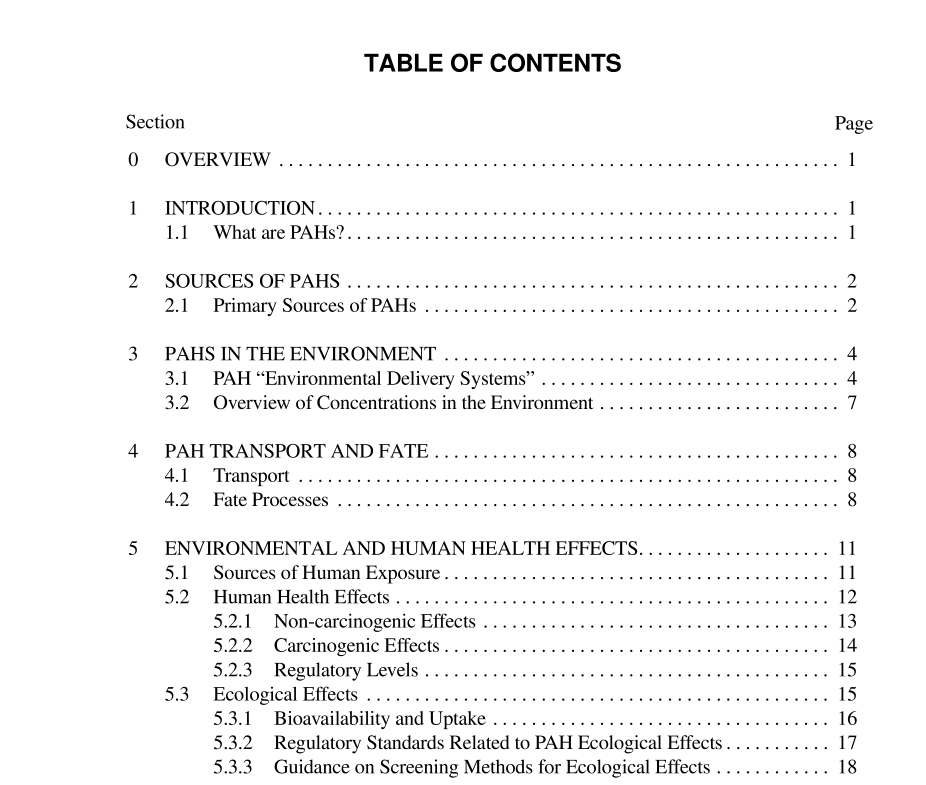API Publ 4714 pdf download

API Publ 4714 pdf download.A Guide to Polycyclic Aromatic Hydrocarbons for the Non-Specialist
2 Sources of PAHs
PAHs are produced in nature through four generalized pathways: 1) low temperature diagenesis of organic matter (part of the changes undergone by a sediment after its initial deposition); 2) the formation of petroleum and coal; 3) incomplete or inefficient combustion at moderate to high temperatures (pyrolysis); and, 4) biosynthesis by plants and animals. These processes are the primary sources of PAHs. Primary sources of PAHs also include anthropogenic (man-made) sources. These include the combustion of fossil fuels and biomass, such as wood, as well as chemical production that results in the formation of PAHs. Because the type distribution of PAHs depends on the temperature of formation, the characteristic distributions of these different sources can be used to help distinguish among different sources of PAHs in the environment. Once produced, PAHs are introduced or “delivered” into the environment through a number of pathways (i.e., secondary sources ), which are described in Section 3.
2.1 PRIMARY SOURCES OF PAHS Diagenic PAHs.
Diagenic PAHs are those produced by natural processes that are set in motion when organic matter is deposited in nature—in soils or sediments. These processes, collectively called diagenesis, begin shortly after deposition of the organic matter. These are low temperature processes that occur after oxygen is depleted, and are believed to involve microorganisms, such as bacteria, though non-biological processes may occur in tandem. Relatively few individual PAHs are produced by these early diagenic processes. One of the most notable PAHs produced in this manner is the five-ringed PAH, perylene, shown in Figure 2-1. Perylene is commonly found in sediments of rivers, lakes, and oceans at a depth in the sediment where oxygen is reduced.Fossil Fuel (Petroleum and Coal) PAHs. Over geological time and within petroleum reservoirs and coal beds in geological structures, another type of PAHs is produced— petrogenic PAHs. Petrogenic PAHs are formed at elevated pressures (and at higher temperatures than the formation of diagenic PAHs) within deeply buried layers of sediments. Petrogenic PAHs are formed, for example, when biological organic matter from plankton is converted to petroleum. These processes also can form coal, although the starting biological material (e.g., higher plants and animals) may be different. Petroleum or petrogenic PAHs and coal-derived PAHs are “fossil fuel” PAHs. The nature of the processes, which convert organic matter to fossil fuels, involves semi-random chemical processes. This fact results in the complexity of many PAH structures that are found in fossil fuels. Hundreds to thousands of individual PAHs may be produced by nature during the processes that form petroleum. Nevertheless, while their compositions vary greatly, crude oils have in common the existence of two to six+ ringed PAHs, with a preponderance of alkylated structures associated with the two to four ringed compounds.
The types of PAHs formed as fossil fuels include a complex variety of parent (i.e., unsubstituted), and alkylated PAHs. Series of PAHs comprised of parent and substituted PAHs form many families or homologous series of PAHs. The phenanthrene homologous series of PAHs includes, for example, phenanthrene itself, plus a series of alkylated homologues of phenanthrene with many alkyl substitutions (see Figure 2-2). The relative abundance of the alkylated PAHs of petrogenic PAHs far exceeds the abundance of the parent (i.e. unsubstituted) compound or C 0 -phenanthrene. The fact that alkylated PAHs “are much greater than” parent PAHs is a main feature of petrogenic PAHs. This is illustrated in the first chart of Figure 2-3 for typical alkyl homologue distributions. Pyrogenic PAHs. High temperature processes such as the combustion of fossil fuels or the burning of wood also form PAH (Figure 2-3). During higher temperature processes, those organic compounds that escape complete combustion (oxidation to carbon dioxide and water) include the pyrogenic PAHs. Diesel fuel combustion, forest fires, and the smoking of foods with certain woods are examples of pyrogenic processes. PAHs are also formed on meats by barbecuing (see Table 5-1). Included in this pyrogenic category are the products of high temperature processing of coals in coal gasification processes. The residuals of the coal gas processes are termed coal tars , and they are rich in the pyrogenic PAHs.









